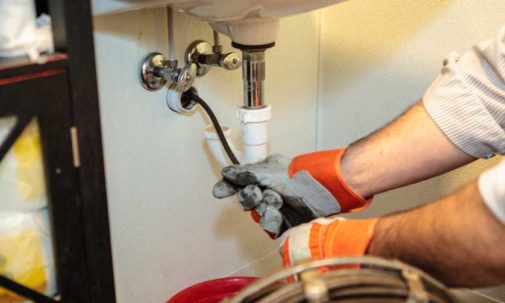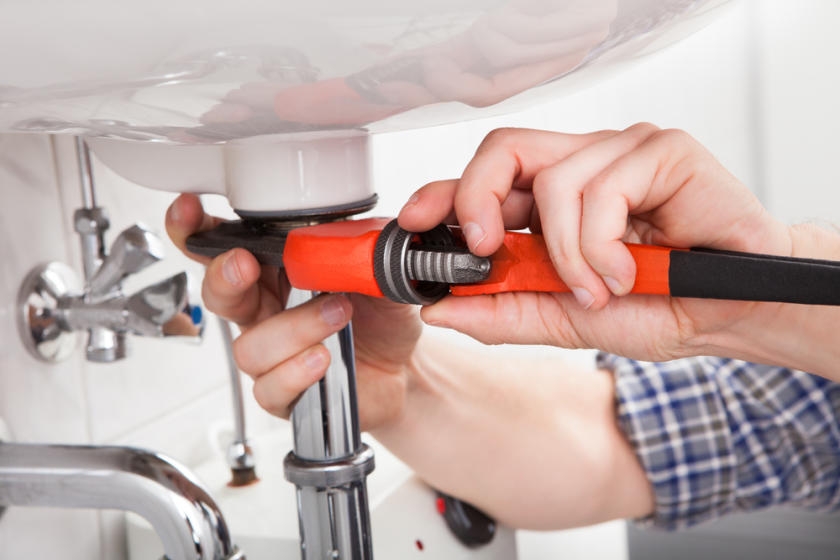The author is making several great pointers about What to Do During a Plumbing Emergency in general in the content just below.

Pipes emergency situations can strike at any time, triggering stress and anxiety and potential damage to your home. Whether it's a ruptured pipeline, a blocked drain, or a dripping tap, knowing exactly how to take care of the scenario until an expert plumbing technician shows up can conserve you from further problems. This post gives essential emergency plumbing ideas to aid you reduce damages and reclaim control throughout a pipes crisis.
Turn Off the Supply Of Water
The primary step in any type of plumbing emergency is to turn off the water system. For local problems, such as a dripping tap or commode, switch off the shutoff near the component. When it comes to a significant leakage or ruptured pipeline, find your home's primary water shut-off valve and turn it off right away. Knowing the area of these shutoffs in advance can save beneficial time throughout an emergency.
Turn off Your Water Heater
In certain emergency situations, such as a burst pipe, it's important to shut off your hot water heater. This stops overheating or damages to the system when water stops moving. Shut off the power supply to the hot water heater (electrical or gas) and let it cool to avoid possible risks.
Briefly Quit a Ruptured Pipe
A ruptured pipe can result in significant water damages in minutes. To minimize the problem:
- Clamp or Cover the Pipe: Use a pipe clamp, rubber, or duct tape as a momentary seal.
- Divert Water Circulation: If possible, draw away the water into a container or basin to limit damages to surrounding locations.
- Keep the Location Dry: Use towels or a wet/dry vacuum cleaner to remove standing water.
- Call an expert plumber instantly to attend to the problem permanently.
Have an Emergency Situation Plumbing Set
Prepare a basic plumbing emergency situation kit to manage small issues properly. Your kit ought to consist of: - Adjustable wrench
- Plumbing's tape
- Pipeline clamps
- Towels and cloths
- A bettor
- Epoxy putty
- Pail.
- Having these tools handy can make a substantial difference in your capability to take care of emergency situations.
Unclog Drains Safely.
A stopped up drainpipe can be a discouraging and unpleasant concern. Here's exactly how to tackle it:. - Utilize a Bettor: For sinks or commodes, a bettor can often dislodge minor blockages. Ensure you utilize the proper kind of bettor for the component.
- Warm Water and Meal Soap: For grease-related obstructions, put a combination of warm water and recipe soap away to separate the grease.
- Avoid Chemical Drain Cleaners: While appealing, chemical cleansers can cause even more injury than great, particularly to older pipes.
- If these methods do not function, prevent utilizing excessive pressure, as it might aggravate the obstruction.
Manage Overflowing Toilets.
An overruning commode can trigger immediate disorder. Below's what you must do:. - Stop the Water Circulation: Eliminate the tank lid and weigh down on the flapper shutoff to stop water from getting in the dish. Shut off the water supply to the commode if required.
- Plunge Delicately: Utilize a toilet plunger to remove the obstruction, but stay clear of aggressive plunging, which can create spilling or further damages.
- Include the Spill: Use towels or a mop to tidy up water rapidly to prevent floor covering damage.
Address Tiny Leaks with Temporary Repairs.
Small leakages can rapidly come to be considerable problems if left unchecked. Utilize these short-lived fixes up until specialist help shows up:.
- Pipeline Tape or Epoxy Putty: Use waterproof tape or epoxy putty to briefly secure the leakage.
- Rubber and Clamp Method: Wrap an item of rubber or an old internal tube around the leak and protect it with a pipe clamp or air duct tape.
- Buckets or Towels: Place containers under the leakage to have water and prevent damage to flooring or furnishings.
- While these solutions aren't permanent, they can help reduce water loss and damages.
Manage Frozen Piping Carefully.
In colder climates, frozen pipes are a typical emergency situation. If you believe a frozen pipe:. - Turn Off the Water: Shut off the primary water system to avoid a ruptured pipeline.
- Defrost Gradually: Make use of a hairdryer, hot pad, or cozy towels to thaw the pipe gradually. Avoid open fires or severe warm, as these can damage the pipe.
- Evaluate for Leakages: Once the pipe is thawed, look for splits or leakages before turning the water back on.
Know When to Call a Specialist.
While quick fixes can assist briefly, certain pipes concerns need immediate specialist focus. Call a plumbing technician if:.
- A burst pipe creates substantial flooding.
- Drains or commodes stay blocked despite your initiatives.
- You discover persistent leakages or water pressure concerns.
- Your hot water heater is leaking or malfunctioning.
- Without delay calling a professional makes sure the issue is settled properly and prevents additional complications.
Protect against Additional Damages.
Taking quick activity to lessen damage can conserve you time and money over time. Here's just how:. - Move Valuables: Eliminate furniture, electronics, and other things from the affected location.
- Use Sandbags: For flooding situations, place sandbags around the area to reroute water.
- Shut Off Power: If water has gotten to electrical outlets or home appliances, switch off the electrical power to stop shocks or fires.
Conclusion.
Pipes emergencies can be frustrating, yet with the best expertise and tools, you can handle the scenario effectively up until aid gets here. By turning off the supply of water, attending to little leakages, and making use of temporary repairs, you can decrease damages and maintain your home safe. Remember, these suggestions are momentary services; always consult an accredited plumbing professional to handle the root cause of the issue. Prep work and fast reasoning are your best allies in any plumbing emergency.
Top Tips for Emergency Plumbing Leak Repairs
Identifying the Leak Source
To properly address a plumbing leak, begin by locating the source using a flashlight and inspecting visible pipes for any signs of water accumulation or dripping. Look for water stains, mold growth, or musty odors which can indicate hidden leaks. Follow the water trail to pinpoint the origin of the leak. Check under sinks, around appliances, and near water heaters as these are common areas for leaks to occur.
If the leak is coming from a visible pipe joint, tightening the connection may solve the issue. Use a wrench to secure the joint without over-tightening, which could cause damage. For small cracks or holes, a temporary fix can be applied using epoxy putty or a pipe clamp until a permanent solution is implemented.
Remember to turn off the water supply before attempting any repairs to prevent further damage. Once the leak is identified, take necessary steps to either fix it yourself or contact a professional plumber for assistance.
Shutting Off the Water Supply
Before initiating any plumbing repairs, make sure you shut off the water supply to prevent further leakage. Locate the main shut-off valve for your property. This valve is typically found near the water meter or where the main water line enters your home. Turn the valve clockwise to shut off the water flow. If you’re dealing with a localized leak, like a sink or toilet, you can also shut off the water supply to that specific fixture by using the individual shut-off valves located underneath or behind the fixture.
Shutting off the water supply is essential to prevent more water from entering the system and causing additional damage. By taking this initial step, you can minimize the extent of the leak and prevent potential flooding in your home. Remember to inform everyone in the household about the water shut-off location in case of future emergencies. Once the water is off, you can proceed with identifying and addressing the leak source to resolve the issue effectively.
Temporary Leak Containment
If you’ve successfully shut off the water supply, the next step is to contain the leak temporarily to prevent further damage. Start by locating the source of the leak. Check for any visible cracks, holes, or burst pipes. Once identified, use materials like duct tape, pipe clamps, or rubber patches to cover the damaged area. For smaller leaks, a bucket or container can be placed underneath to catch dripping water.
If the leak is coming from a pipe joint, tightening the connection with a wrench might help reduce the leakage temporarily. Remember, these are just temporary solutions to prevent immediate damage. It’s essential to contact a professional plumber to assess and fix the issue permanently.
While containing the leak, keep an eye on the affected area for any signs of worsening. If the leak worsens or you’re unable to contain it effectively, don’t hesitate to contact emergency plumbing services for immediate assistance. Taking quick action to contain the leak can help minimize water damage and save you from costly repairs in the long run.
Contacting Emergency Plumbing Services
When facing a plumbing emergency, promptly reach out to professional plumbing services for immediate assistance. Contacting emergency plumbing services is essential to prevent further damage to your property. These professionals have the expertise and tools to address the issue quickly and effectively. When you call for emergency plumbing services, provide as much detail as possible about the leak, its location, and any steps you have taken to contain it. This information will help the plumbers assess the situation and come prepared to tackle the problem.
Ensure that you have the contact information for emergency plumbing services readily available, so you can act swiftly in case of a leak. Many plumbing companies offer 24/7 emergency services, so don’t hesitate to reach out, even if the leak occurs outside regular business hours. By contacting professional plumbers promptly, you can mitigate the damage caused by the leak and restore the functionality of your plumbing system efficiently.
Post-Repair Leak Prevention
To prevent future leaks after repairs, conduct a thorough inspection of all plumbing connections. Start by checking for any signs of corrosion, rust, or wear on pipes, fittings, and fixtures. Tighten any loose connections and replace any damaged parts to guarantee a secure fit. Additionally, inspect the seals around toilets, sinks, and tubs to make sure they’re intact and not deteriorating.
Consider installing water leak detectors in key areas of your home, such as near water heaters, under sinks, and around appliances like washing machines and dishwashers. These detectors can alert you to leaks early on, helping you address them before they cause significant damage.
Regularly monitor your water bill for any unexpected spikes, as this could indicate a hidden leak. If you notice a sudden increase in water usage without a corresponding change in your habits, it’s crucial to investigate the issue promptly.
https://callprofessorplumb.com/articles/top-tips-for-emergency-plumbing-leak-repairs/

As a devoted person who reads on Expert Tips for Managing a Plumbing Emergency Until Help Arrives, I imagined sharing that excerpt was important. Feel free to take the time to promote this post if you enjoyed it. Thanks for your time spent reading it.
Book 24/7
Comments on “Quick Fixes for Plumbing Emergencies: What to Do Until Help Arrives”